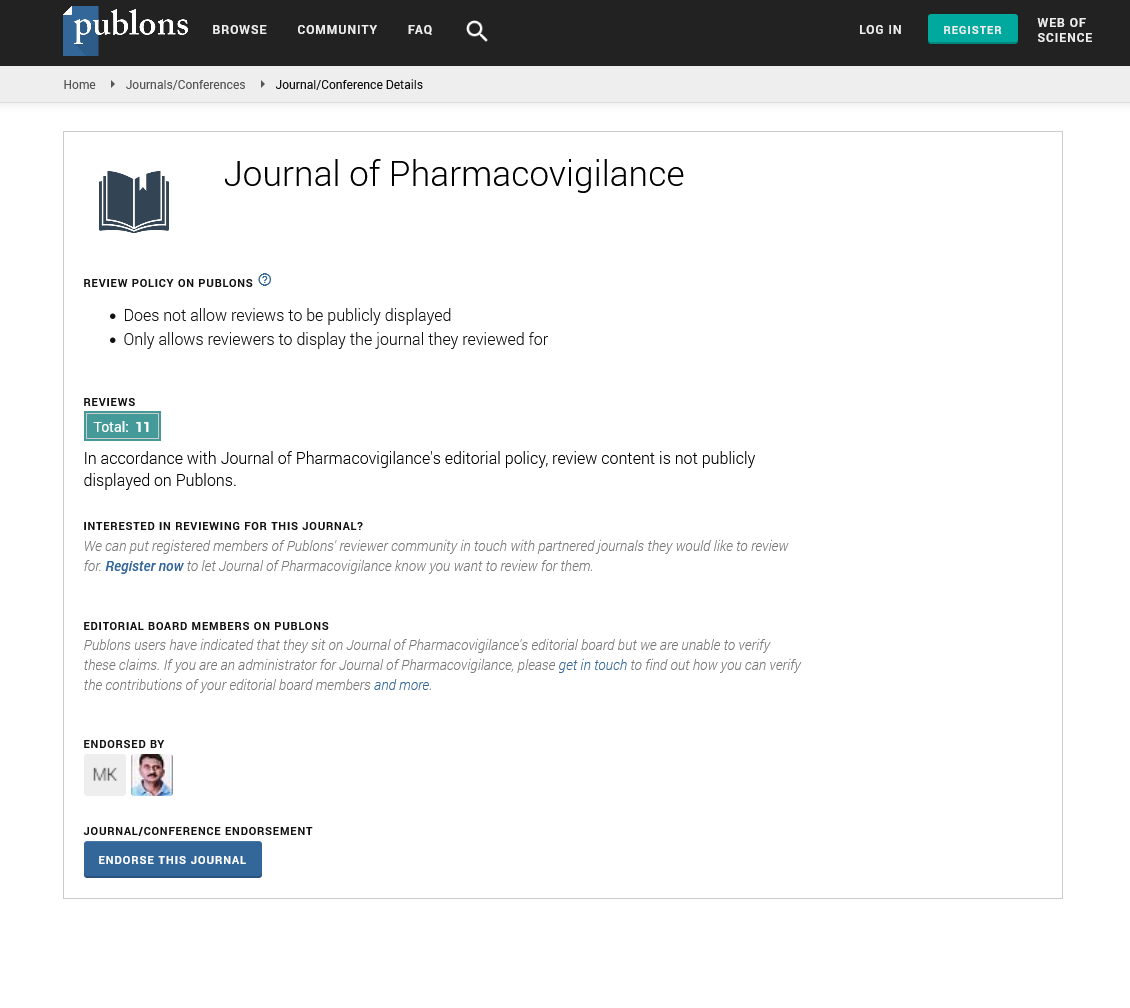Indexed In
- Open J Gate
- JournalTOCs
- The Global Impact Factor (GIF)
- RefSeek
- Hamdard University
- EBSCO A-Z
- OCLC- WorldCat
- Publons
- Euro Pub
- Google Scholar
Useful Links
Share This Page
Journal Flyer

Open Access Journals
- Agri and Aquaculture
- Biochemistry
- Bioinformatics & Systems Biology
- Business & Management
- Chemistry
- Clinical Sciences
- Engineering
- Food & Nutrition
- General Science
- Genetics & Molecular Biology
- Immunology & Microbiology
- Medical Sciences
- Neuroscience & Psychology
- Nursing & Health Care
- Pharmaceutical Sciences
Perspective - (2022) Volume 10, Issue 9
Recent Advances in Pharmacokinetics and Its Implications
Nehal Farid*Received: 22-Aug-2022, Manuscript No. JP-22-18420; Editor assigned: 25-Aug-2022, Pre QC No. JP-22-18420(PQ); Reviewed: 08-Sep-2022, QC No. JP-22-18420; Revised: 15-Sep-2022, Manuscript No. JP-22-18420(R); Published: 22-Sep-2022, DOI: 10.35248/2329-6887.22.10.392
Description
Pharmacokinetics can be defined as the study of the dynamic movement of a foreign chemical (xenobiotic) as it passes through the body and includes the kinetics of absorption, distribution, biotransformation/metabolism and excretion. It can be easily explained as how the body deals with xenobiotics. Pharmacokinetics uses mathematical formulas to describe the time course of ADME of xenobiotics in the body and to better understand the nature and magnitude of the biological effects (therapeutic or toxic) of xenobiotics to predict. It can be interpreted and even measured. Several approaches are used in pharmacokinetics to describe the fate of xenobiotics in the body. This involves viewing the body as one or more homogeneous compartments based on mathematical fit or physiological properties. Describing the speed of movement of foreign bodies in tissues allows us to better interpret and predict the fate of foreign bodies in the body.
It is used in therapeutic drug monitoring to guide and optimize therapy, determine dosage, and determine dosing frequency to achieve desired effects and minimize toxicity. It can also be used to identify drug interactions and resolve lack of response to treatment. Pharmacokinetics assesses patient care in cases of overdose/toxicity by estimating the amount of drug or toxin in the body and assessing drug clearance or toxicity and direct decontamination work of compounds involved in adverse drug reactions.
Pharmacokinetics varies from person to person and is influenced by age, sex, diet, environment, weight and pregnancy, patient pathophysiology, genetics, and drug-drug or food-drug interactions. Drug therapy is influenced by factors that influence pharmacokinetics and pharmacodynamics. Gender differences in body composition such as, total body water, body fat percentage, muscle mass, organ size, blood volume and flow rate, and metabolic enzymes contribute to individual differences in pharmacokinetics and ultimately drug contributes to therapeutic effects. Drug metabolism can be influenced by genetics. Genetic variations can affect how drugs are metabolized in the body. We don't have time to discuss pharmacogenetic.
Drug metabolism and excretion are also affected by age. For example, children may not have the well-developed liver function to metabolize drugs as extensively as adults. Some drugs may be excreted more rapidly in children, but excretion is reduced in older patients with impaired kidney, liver, or heart function. Illness, infection, and inflammation can decrease drug metabolism, increasing drug half-life and duration of drug effect. Drug-drug or food-drug and drug-herb interactions can increase or decrease drug metabolism and affect the duration and potency of drug action.
Pharmacokinetic studies are typically performed in healthy volunteers or patients to study and evaluate drug-body interactions in the general population. Data from pharmacokinetic studies are very useful because they inform pharmacologists to make decisions about the appropriate design and administration of each drug. Clinical pharmacokinetics applies this information to clinical medicine to facilitate the use of the safest and most effective drug treatments for individual patients.
Citation: Farid N (2022) Recent Advances in Pharmacokinetics and Its Implications. J Pharmacovigil. 10:392.
Copyright: © 2022 Farid N. This is an open-access article distributed under the terms of the Creative Commons Attribution License, which permits unrestricted use, distribution, and reproduction in any medium, provided the original author and source are credited.

